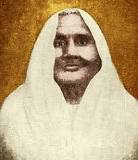
Matangini
In the tapestry of India’s freedom struggle, there are threads that shimmer brightly but are often overshadowed by more prominent figures. Among these is Matangini Hazra, a remarkable woman whose bravery and resilience in the face of adversity make her an unsung hero. Her story is a poignant reminder of the countless sacrifices made by ordinary people to achieve extraordinary feats.
Early Life and Awakening
Matangini Hazra was born on October 17, 1869, in the small village of Hogla in the Midnapore district of Bengal, a region then gripped by poverty and colonial oppression. From a young age, she exhibited a strong sense of justice and an unyielding spirit. Despite her family’s humble circumstances, she harbored a deep-seated desire to contribute to her community and stand against injustice.
Married off at the tender age of 12 to Trilochan Hazra, a much older man, Matangini’s early life was marked by domestic responsibilities and personal hardships. However, her husband’s untimely death left her a widow at 18, a status that came with social stigma and isolation. But instead of succumbing to despair, Matangini found within herself a wellspring of strength and resolve.
A Spark Ignited
The turning point in Matangini’s life came during the Non-Cooperation Movement led by Mahatma Gandhi in the early 1920s. The movement called for the boycott of British goods and institutions, urging Indians to take pride in their heritage and resist colonial rule. Matangini, then in her early 50s, was inspired by Gandhi’s message of non-violent resistance and decided to join the struggle for independence.
Her involvement in the freedom movement began with small acts of defiance, such as spinning khadi and participating in local protests. However, it soon became evident that her courage and leadership abilities far exceeded these modest beginnings. She became a prominent figure in the Quit India Movement, which was launched in 1942 with the aim of ending British rule in India.
The March to Tamluk
Matangini’s most notable contribution came during the Quit India Movement. On September 29, 1942, she led a large procession of about 6,000 protesters, mostly women, to take over the Tamluk police station. The procession was a direct challenge to British authority, a daring act of civil disobedience in the face of heavy repression.
As the marchers approached the police station, they were met with a barrage of bullets from British troops. Undeterred, Matangini, holding the Indian tricolor flag aloft, continued to march forward, chanting “Vande Mataram” and urging her fellow protesters to stay resolute. Even as bullets tore through her body, she pressed on, her spirit unbroken.
A Sacrifice for Freedom
Matangini Hazra was 73 years old when she fell to the ground, mortally wounded, yet still clutching the flag. Her death was not in vain; it galvanized the people of Midnapore and beyond, inspiring them to continue the struggle with renewed vigor. Her sacrifice became a symbol of the indomitable spirit of India’s freedom fighters, particularly the often-overlooked contributions of women.
Despite her heroic actions, Matangini Hazra’s name remains relatively unknown compared to other leaders of the freedom movement. Yet her story is a powerful testament to the impact that ordinary individuals can have on the course of history. Her life and death remind us that the fight for justice and freedom is not confined to the corridors of power but is waged in the hearts and minds of everyday people.
Legacy and Remembrance
In the years following India’s independence, efforts have been made to honor Matangini Hazra’s legacy. Statues have been erected in her memory, schools and roads named after her, and her story included in history books. However, these gestures, while significant, often fail to capture the full extent of her bravery and the depth of her commitment to the cause of freedom.
Matangini’s legacy lives on in the spirit of resistance that continues to inspire movements for justice and equality around the world. Her life is a reminder that the struggle for a better world is a collective effort, built on the sacrifices of countless unsung heroes who dare to dream of a brighter future.
Conclusion
Matangini Hazra’s story is one of courage, resilience, and unwavering determination. Her contributions to India’s freedom struggle are a testament to the power of individual action and the impact of grassroots movements. As we reflect on the journey to independence, let us remember the sacrifices of unsung heroes like Matangini Hazra, whose lives and legacies continue to inspire us to strive for justice and equality.
In the quiet moments of reflection, let us honor Matangini Hazra not just as a freedom fighter, but as a beacon of hope and a symbol of the enduring human spirit. Her life, marked by personal sacrifice and collective struggle, serves as a poignant reminder that true heroes often emerge from the most unexpected places, leaving an indelible mark on the pages of history.
By: Jhanvi
Write and Win: Participate in Creative writing Contest & International Essay Contest and win fabulous prizes.


